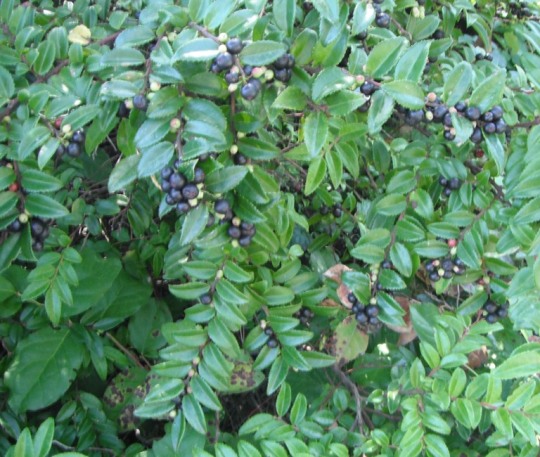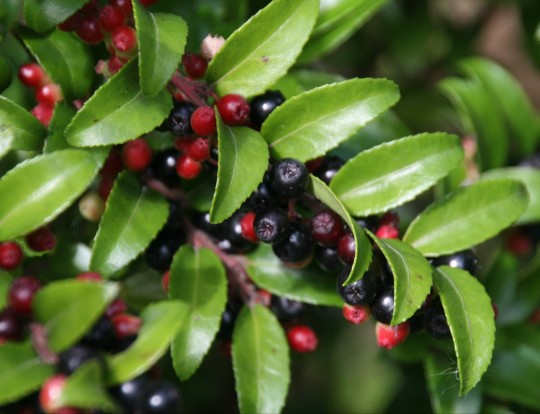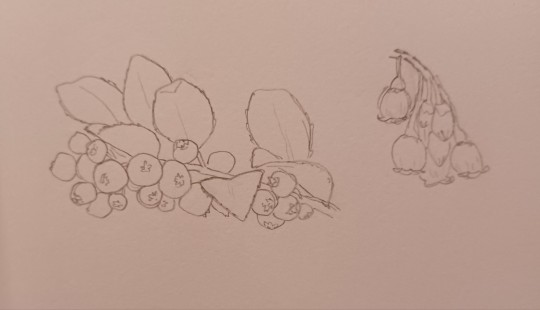welcome to the photosynthesis dimension class project (inactive)
Last active 60 minutes ago
Don't wanna be here? Send us removal request.
Text
Artist's statement:
I have chosen to create a Tumblr blog as a log of the plants covered in this course. Each post will include the name, family, habitat and adaptations, and how to identify each plant. They will also feature photos of the plants, and drawings of their identifiable characteristics. I hope to take most of the photos myself, but photos from other sources may be included when certain features are not visible, such as flowers or leaves being dormant. I am choosing to include sketches as well, because I have found drawing to be an effective way to both become more familiar with a plant and convey certain features to an audience. The goal of this blog is to engage with anyone interested in plants and share knowledge of their traits, and garner enthusiasm about the plant world and what we see around us.
0 notes
Text
This week's curiosity plant is Potentilla anserina, in the ROSACEAE family! Its common name is common silverweed.
This perennial plant can be identified by its pinnately compound leaves with coarsely serrated leaflets and a whitish silky texture. The flowers are solitary on long stalks, with 5 petals, many stamens, and a bright yellow color. The fruits are light brown, ovoid achenes.
Potentilla anserina is native from Alaska to California in wet, alkaline habitats from the coast to inland. It spreads rapidly via runners, which allow it to stabilize in shifting soils in disturbed habitats.




Sources:
https://www.burkeherbarium.org/imagecollection/taxon.php?Taxon=Potentilla%20anserina
0 notes
Text
Say hi to Acer rubrum, in the SAPINDACEAE family! It is commonly known as red maple.
This deciduous tree can be identified by its opposite, palmately lobed leaves with serrated margins and 3-5 lobes. The leaves are red in the fall. It has small, fragrant, red flowers in sessile clusters that emerge before the leaves. Its fruits are schizocarps on long stems with a ~60 degree wing angle.
Acer rubrum is native to the eastern and central United States with regional habitat variation. It is adapted to wetlands, with a shallow lateral root system and branch lenticels to transfer oxygen to the roots. It can resprout from its root crown, stump, or root suckers after damage.




0 notes
Text
Next up is Pinus ponderosa, in the PINACEAE family! Its common name is Ponderosa pine.
This evergreen tree can be identified by its long needles in fascicles of 3, which are clustered at the ends of branches. Its cones are large and have chocolate brown scales with sharp, yellowish brown pointed tips. The bark is furrowed on younger trees and scale-like on mature trees, and has a vanilla or butterscotch scent.
Pinus ponderosa is native from British Columbia to California, in dry, open forest habitats. It is fire adapted with thick bark and very few low branches to serve as ladder fuels. It deters herbivory and microbial infection with tissue compounds, and defends against insects with resin ducts. It has mycorrhizal associations to aid in nutrient and water intake.




0 notes
Text
This cute friend is Populus tremuloides, in the SALICACEAE family. Its common name is quaking aspen!
This small tree can be identified by its alternate, cordate to orbicular leaves with long, flat petioles at a right angle to the leaf. The leaves are serrulate with hairy margins. It has both male and female catkin flowers. The fruits are lanceolate capsules.
Populus tremuloides is native to western and northern North America, in dry to wet woodlands, slopes, and sites of disturbance. It is an early succession species, being able to quickly reestablish after fire and tolerate low nutrient conditions via mycorrhizal associations. It can spread vegetatively by forming clonal stands. Compounds in the leaves make them difficult to digest.




0 notes
Text
Let's take a look at Fagus sylvatica, in the FAGACEAE family. It is commonly known as European or common beech!
This deciduous tree can be identified by its alternate, ovate leaves with a narrow base, undulate margins, and parallel veination. The female flowers are in spikes of 2-4 and covered in a soft spiny layer. It produces triangular nuts in a woody husk with soft spines.
Fagus sylvatica is native in Europe to the Caucasus region in humid climates on soft soils. It can regenerate from root suckers, trunk shoots, and adventitious rooting from branches. It can tolerate low nutrient conditions thanks to its mycorrhizal associations. It is highly shade tolerant, and forms dense canopies that prevent other trees from growing beneath it.




0 notes
Text
Our next plant is Styrax japonicus, in the STYRACACEAE family! Its common name is Japanese snowbell tree.
This deciduous tree can be identified by its alternate leaves, ovate to narrowly oblong in shape, with acuminate tips and serrations near the tip. It produces pendulous raceme inflorescense of white, bell-shaped flowers. Its fruits are fleshy, ovoid drupes with one large seed.
Styrax japonicus is native to China, Korea, and Japan in open wooded habitats. It is pollinated by bees. Its seeds remain attached to the flower, so they are able to float and be dispersed by water. Herbivory and microbial infections are deterred by compounds in the plant tissues and oils.




0 notes
Text
Here we have Carpinus betulus, in the BETULACEAE family. Its common names are ironwood and European hornbeam!
This deciduous tree can be identified by its alternate, ovate-oblong leaves with ribbed, parallel veins and doubly serrated edges. The female flowers form pendulous clusters of long, 3-lobed green bracts. It produces nuts enclosed in leathery bracts.
Carpinus betulus is native from Europe to Iran in temperate lowland forests. It reproduces vegetatively through root suckering and epicormic budding. It can colonize open sites as an early succession species, as well as tolerate understory shade by altering its leaf morphology. Leaf compounds deter herbivory and microbial infections.




0 notes
Text
Next up is Liquidambar styraciflua, in the ALTINGIACEAE family! Its common name is sweet gum.
This deciduous tree can be identified by its alternate, palmately lobed leaves with fine white hairs on their underside. Its female flowers form in globose heads, and the male flowers form in upright clusters. It produces round, spiny, burr-like fruits made up of woody seed capsules.
Liquidambar styraciflua is native to the eastern United States, Mexico, and Central America, primarily in moist woods, swamps, and streambanks. It has a shallow root system that allows oxygen access in wet soils. It can resprout from its roots after fire, and fire wounds to the trunk can be covered with a secreted gum. Compounds in its tissues deter herbivory and infection.




0 notes
Text
Another delightful week in the plant dimension! Let's start off with Cotinus coggygria, in the ANACARDIACEAE family. It is commonly known as smokebush, smoke tree, or Venetian sumac.
This shrub can be identified by its alternate, oval leaves with a rounded, slightly pointed apex. Cultivars range from purple, green, and red in color. It has large, loose, panicle inflorescense with purplish hairs and very small flowers. Its fruits are small kidney shaped drupes.
Cotinus coggygria is native from southern Europe to central China in hill forests and mountain thickets from sandy to clay-rich soils. It is pollinated by bees and flies, and its flattened seeds aid dispersal by wind. It can adapt to drought by altering its root morphology to optimize water intake, and it is able to resprout from its base. It defends against herbivory and infection with compounds in its tissues.




0 notes
Text
This week's curiosity plant is Fragaria chiloensis, in the ROSACEAE family! It is commonly known as beach or coastal strawberry.
This perennial herbaceous plant can be identified by its ternately compound leaves with shiny, leathery leaflets with rounded, coarsely serrated margins. Its flowers are white with 5 petals. It produces fleshy, red achene fruits.
Fragaria chiloensis is native from Alaska to California in coastal habitats such as sand dunes and headlands. It is tolerant of drought, and its glossy leaves provide defense against harsh coastal conditions. It spreads vegetatively through runners.




Sources:
https://www.burkeherbarium.org/imagecollection/taxon.php?Taxon=Fragaria%20chiloensis
https://coastal-watershed.org/plant-profile-beach-strawberry/
0 notes
Text
Next up is Vaccinium ovatum, in the ERICACEAE family. Its common name is evergree huckleberry!
This evergreen shrub can be identified by its alternate, ovate leaves with serrulate margins. The new growth has a red color, and the branchlets are reddish as well. Its urn-shaped flowers are white or pink and occur in clusters of 3-10 in the leaf axils. It produces shiny, round berries that are black when ripe.
Vaccinium ovatum is native from British Columbia to California, commonly in the edges and openings of coniferous forests. It can grow in either shade or full sun. It can grow in very nutrient poor soils thanks to its mycorrhizal fungus associations, which also aid in the intake of water. Well established plants can recover from fire by resprouting from their root crown.




0 notes
Text
Our next plant for today is Corylus cornuta, in the BETULACEAE family. Its common name is beaked hazelnut.
This deciduous shrub can be identified by its alternate, elliptic to oval shaped leaves with doubly serrated margins. The leaves are densely pubescent and have a very soft feel. It has male catkin flowers that emerge before the leaves. It produces beaked nuts that are surrounded by a light green husk of bracts.
Corylus cornuta is native to North America in moist forest thickets, shady openings, clearings, and well drained streamside sites. It is moderately shade tolerant, but is most abundant in open canopy areas. It can resprout from its root crown after fire, and is quick to reestablish by seed on open sites following disturbance. It can spread vegetatively by suckering and layering. Its hairy leaves deter herbivory, and its seeds have antifungal and antibacterial compounds.




0 notes
Text
Here we have Paeonia, in the PAEONIACEAE family! It is commonly known as peony.
This herb or shrub can be identified by its alternate leaves that are pinnately compounded or simple and dissected. Its flowers are large, solitary, and terminal, with 5-9 petals and many stamens. They are red, white, or pink in color. Its fruits emerge as a cluster of follicles.
Paeonia is native from Europe to east Asia, as well as western North America. The genus has many different species, hybrids, and cultivars. It has adapted plasticity to varying light conditions, with light saturation points and light compensation points that shift with the amount of shade in their habitat.




0 notes
Text
Next up is Vaccinium parvifolium, in the ERICACEAE family. Its common name is red huckleberry!
This mostly deciduous shrub can be identified by its alternate, oval-shaped leaves with smooth margins. It has bright green branches. Its flowers are small and urn-shaped and are greenish-yellow to pink in color. They emerge solitarily from the leaf axils. They produce bright red berrries.
Vaccinium parvifolium is native to the west coast of North America in moist woods with rich soils. It is tolerant of shade but does best in areas with a more open canopy. It spreads via rhizomes and can resprout after damage or removal of the aboveground plant. It has mycorrhizal associations that aid in the intake of water and nutrients.




0 notes
Text
Here we have Salix sitchensis in the SALICACEAE family! Its common name is Sitka willow.
This decidous shrub/small tree can be identified by its alternate leaves with a satiny underside covered in small hairs. It produces upright carkin flowers, appearing before or with the leaves. Its fruits are pointed, silky capsules of smally fuzzy seeds.
Salix sitchensis is native to the west coast of North America in a range of habitats, including moist woods and streambanks, gravelly streambeds, tidal marshes, and sand dunes. It can spread and regenerate vegetatively by layering and sprouting from root crowns and stem bases. This allows them to thrive in wetlands where flooding disturbance and beaver activity is common. Leaf compounds, glands, and hairs deter herbivory from insects and other animals. It is tolerant of shade and often grows in the understory beneath taller trees.




0 notes
Text
Our next plant is Sorbus aucuparia, another friend from the ROSACEAE family. It is commonly known as Rowan or European mountain ash.
This small deciduous tree can be identified by its pinnately compound leaves with 9-15 pairs of serrated leaflets. It produces compound terminal comrymb inflorescense, with at least 75 white, 5-petaled flowers. The flowers are very fragrant. Its fruits are shiny, orange-red, fleshy pomes.
Sorbus aucuparia is native from Europe to Asia and found in woods, thickets, and roadside areas. It is tolerant of frost and cold conditions, and has mycorrhizal associations that aid itsbintake of water and nutrients. It is able to reproduce vegetatively through root suckering and epicormic shoots. Antifungal compounds are present in its wood.




0 notes